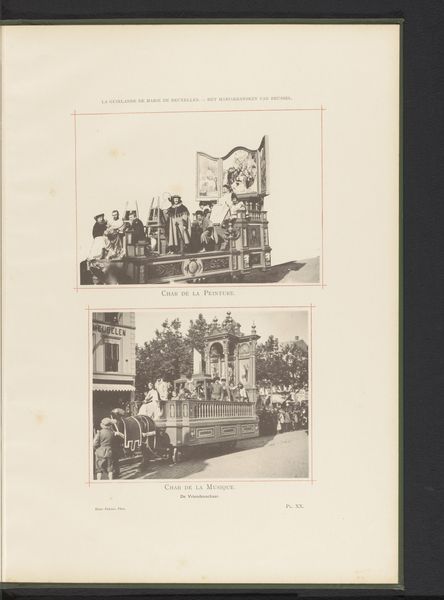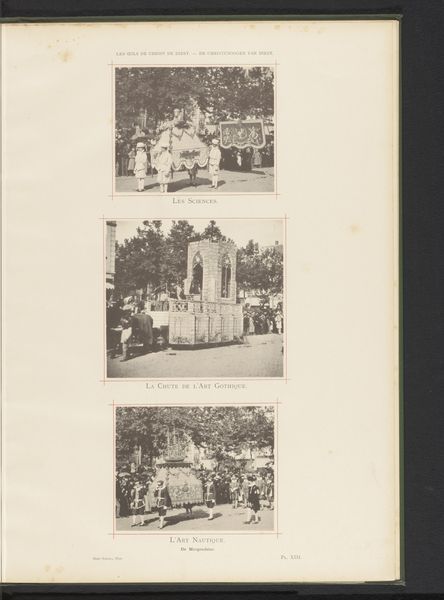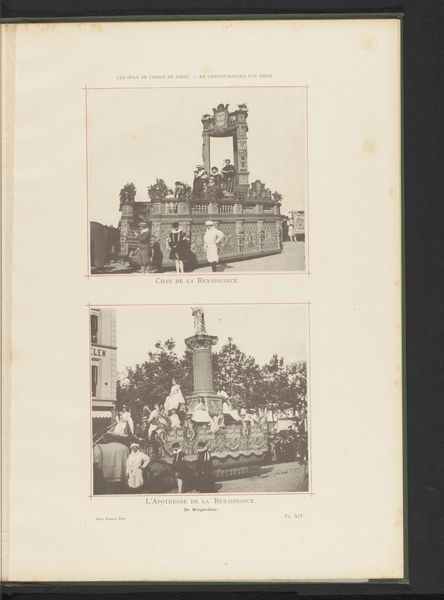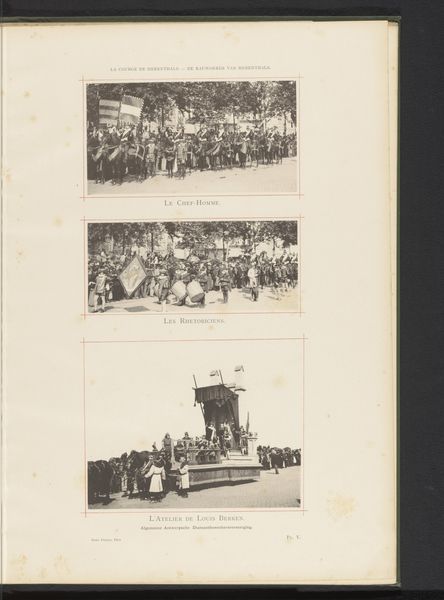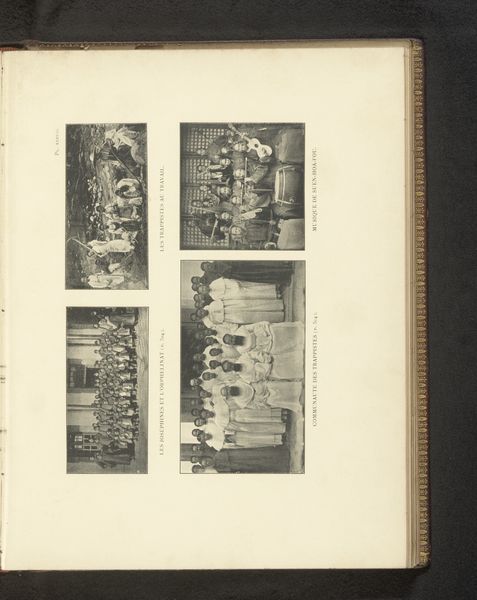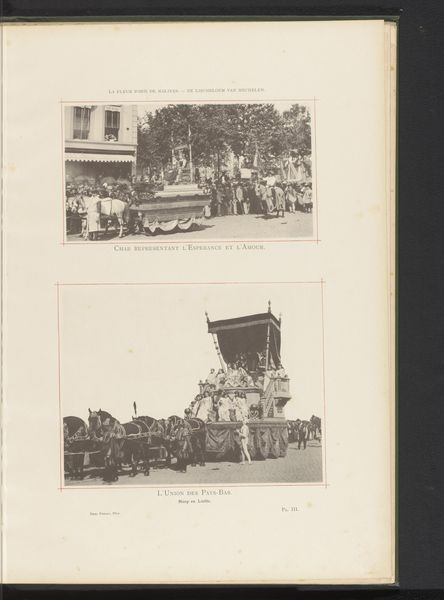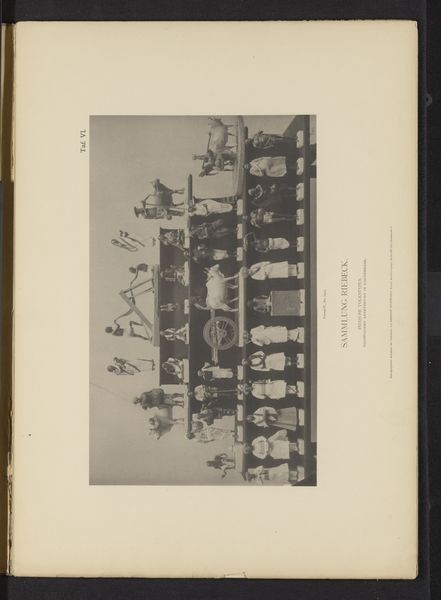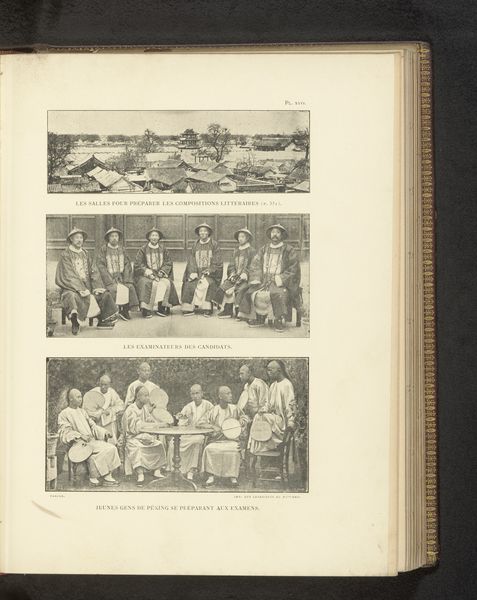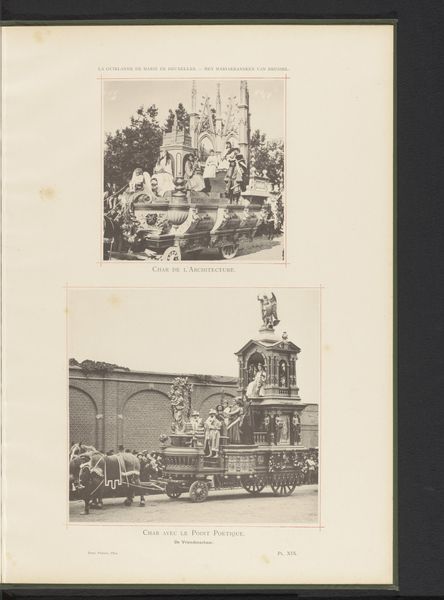
Drie gezichten op de optocht van Landjuweel ter ere van het vijftigjarig bestaan van de Academie d'Archéologie de Belgique in 1892 in Antwerpen 1892
0:00
0:00
print, photography, photomontage
# print
#
photography
#
photomontage
#
history-painting
#
modernism
Dimensions: height 495 mm, width 352 mm
Copyright: Rijks Museum: Open Domain
Curator: This photomontage by Frères Dero captures the procession of the Landjuweel in Antwerp, 1892. What strikes you immediately? Editor: Well, the layered presentation gives it a kind of dreamlike quality, or maybe like flipping through an old album. The monochromatic scheme enhances the vintage vibe. What’s Landjuweel? Curator: Landjuweel, in this case, refers to a festival, specifically commemorating the 50th anniversary of the Academie d'Archéologie de Belgique. Look at the carefully staged groups, each tableau seems to tell its own story. The composition seems symbolic. Editor: Agreed. And what interests me here is how they achieved this. It’s a photomontage, yes, so individual images were combined. The technology behind that process, the printing techniques—the layering is surprisingly delicate, creating that ethereal sense you mention. Was photography accepted as art at this point, or were Frères Dero intentionally blurring that line? Curator: Photography was indeed gaining ground, yet photomontage pushed boundaries further. Consider how these juxtaposed images form a cultural memory, creating a powerful statement about Belgian identity, especially linked to classical virtues that these scholarly societies often evoke. Editor: I’m seeing themes of industry and artistry here, but framed within that late 19th-century drive towards nationalism and progress through scientific exploration. All the symbolism points toward the glorification of this advancement, but filtered through a deliberately antiquated lens in some sections of the composition, giving this Landjuweel celebration a distinctly retrospective flavor. Curator: Precisely. They were crafting an idealized vision of history, embedding shared symbols that evoke continuity. In a way, photography served here as an "objective" record, elevated with intentional staging and the artistic license offered by photomontage to reinforce cultural narratives. Editor: Seeing the seams between material practice, symbolic messaging, and historical documentation helps me see that more clearly now. Curator: Absolutely. This photomontage creates a tapestry that intertwines history, symbolism, and artistic technique. Editor: I leave seeing these combined techniques as evidence of rapid change in image culture, still affecting how collective values get assembled and disseminated today.
Comments
No comments
Be the first to comment and join the conversation on the ultimate creative platform.
